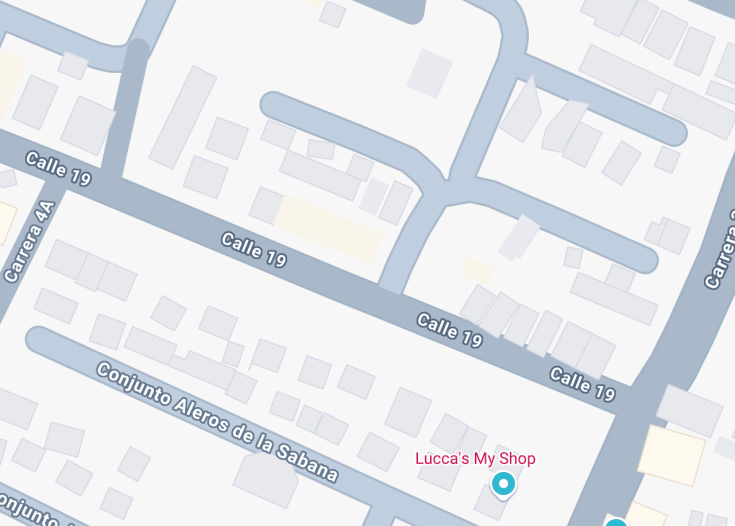In the heart of Colombia stands the majestic Monumento Diosa Chía, dedicated to the goddess of the moon and fertility in the Muisca indigenous culture. This sculpture not only serves as a cultural icon but also offers visitors a profound glimpse into the country’s rich ancestral heritage.
Erected in the city of Chía, it attracts tourists for its impressive size and the panoramic views it provides of the surrounding landscapes. The monument fosters a deep appreciation for Colombia’s pre-Hispanic civilizations, making it a must-see for anyone interested in history and culture.
When visiting the Monumento Diosa Chía, ensure to attend during the early morning or late afternoon for the most spectacular views of the landscape illuminated by the golden sun.
Consider pairing your visit to the monument with a guided tour, as it offers insightful stories about the Muisca culture and the significance of the Diosa Chía.
Monumento Diosa Chia: an emblem of heritage
The Monumento Diosa Chia stands as a cultural beacon in Chia, Colombia, capturing the essence of the area’s rich indigenous history. Erected to honor the Muisca goddess of the moon, the monument is not only a tribute to the deity but also serves as a symbol of local pride and identity. Tourists are drawn to this site for its impressive sculpture and the deep historical roots it represents.
Surrounded by lush landscapes, the site provides an excellent opportunity for photography and is often included in city tours focusing on historical and cultural themes. The story of the goddess Chia, connected with the moon and night, adds a mystical aura to visits, especially during the evening hours when the statue is beautifully lit. This monument offers a unique insight into the spiritual life of the indigenous Muisca people, making it a key destination for those interested in history and native Colombian cultures.
Exploring the surroundings of the Monumento Diosa Chia
The area around the Monumento Diosa Chia is known for its natural beauty and local culture. Visitors can engage in a variety of activities ranging from guided historical tours that delve into the mythology of the Muisca civilization, to serene walks through the nearby landscapes.
The park surrounding the monument features well-maintained pathways ideal for a leisurely stroll or a peaceful picnic. Educational workshops and cultural events are periodically conducted here, offering deeper understanding and appreciation of the area’s indigenous heritage. These activities make the Monumento Diosa Chia not just a visit, but an immersive experience.
Embracing the history at Monumento Diosa Chia
One notable aspect of visiting the Monumento Diosa Chia is the engaging storytelling sessions that recount the legends of the Muisca gods tied to the Chia region. These stories offer a captivating glimpse into the spiritual and celestial significances regarded by the Muisca community.
Particularly, the tale of how Chia, the moon goddess, was believed to control the night and was revered by the Muisca people, adds an intriguing layer to the cultural tapestry of the area. These narratives enrich the visitor experience, making each trip both educational and entertaining.
Explore the enchantment of Monumento Diosa Chia
The Monumento Diosa Chia is an exquisite destination that caters to a wide range of visitors, including families, couples, and history enthusiasts. As a beacon of cultural heritage and mythological grandeur, it offers an immersive experience into the mystical world of Muisca legends.
Visitors can expect to step into a world where every corner tells a story, enveloped in a fascinating blend of history and nature. The monument, celebrating the goddess of water, Chia, provides a unique spiritual connection with the past.
Engage with the educational exhibits and participate in the interactive sessions designed to provide a deeper understanding of the ancient Muisca civilization. The serene surroundings also offer a magical backdrop perfect for a day out in the lap of nature, making it suitable for both reflective solitude and joyful family gatherings.
Discover the perfect time to visit Monumento Diosa Chia
Visiting the Monumento Diosa Chia is particularly spellbinding during the dry seasons of December to March. The pleasant weather complements the lush scenery, making it ideal for outdoor activities and uninterrupted explorations.
Annual Cultural Festivals
Plan your visit during the vibrant Festival de la Luna, usually held in September. This festival celebrates local heritage and the goddess Chia with mesmerizing dance performances, local music, and artisan displays, presenting a perfect blend of culture and history.
Accessibility and visitor information for Monumento Diosa Chia
Ensuring a comfortable visit for everyone is pivotal at the Monumento Diosa Chia.
Accessibility
Limitations
- Large bags and food items are not allowed inside the exhibit halls.
- Pet access is restricted to service animals only.
- Flash photography is prohibited.
Notes to visitors
- Guided tours are available every hour.
- It’s advisable to wear comfortable shoes as the complex spans a large area.
General information
Details for your visit to Monumento Diosa Chia
Location
Nestled amidst the lush greenery of the northern outskirts, the monument is easily reachable from the central park of Chia, a popular local landmark.
Address:
Carrera 9 #9-99, Chia, Cundinamarca, Colombia
Opening hours
The monument welcomes visitors all year round with the following timings:
Monday to Friday: 9 AM – 5 PM
Saturday to Sunday: 10 AM – 6 PM
Closed on Public Holidays
How to reach Monumento Diosa Chia
Reaching the Monumento Diosa Chia is convenient from various major locations.
Car
Traveling by car is perhaps the easiest way to get to the monument with ample parking available. Here is how you can reach from nearby cities:
| Route | Distance | Travel time |
|---|---|---|
| From Bogotá | 30 miles (48 km) | 50 minutes |
| From Zipaquira | 18 miles (29 km) | 35 minutes |
| From Sopó | 9 miles (14.5 km) | 20 minutes |
Nearby Attractions
Enhance your visit by exploring these nearby attractions, listed from closest to furthest:
- Park of the Flowers – 1 mile (1.6 km)
- Chia Town Center – 3 miles (4.8 km)
- Sopó Valley – 5 miles (8 km)
- Zipaquira Salt Cathedral – 15 miles (24 km)
- Guatavita Lagoon – 22 miles (35 km)
- Bogotá Botanical Garden – 25 miles (40 km)
Common questions
What is the historical significance of the Monumento Diosa Chia?
What materials and techniques were used in the construction of the Monumento Diosa Chia?
Who designed the Monumento Diosa Chia, and what was their inspiration?
How do local communities perceive the Monumento Diosa Chia?
Are there guided tours available at the Monumento Diosa Chia, and what topics do they cover?
What is the best time of year to visit the Monumento Diosa Chia?
What are some nearby attractions to visit along with the Monumento Diosa Chia?
What accommodations are available near the Monumento Diosa Chia?
Are there any local culinary specialties one should try while visiting the Monumento Diosa Chia?
Can photography be done at the Monumento Diosa Chia?
What learning opportunities are available for children at the Monumento Diosa Chia?
How has the Monumento Diosa Chia contributed to local tourism?

Is the Monumento Diosa Chia in Chia worth the visit?
The Monumento Diosa Chia, located in Chia, represents a significant cultural icon, embodying deep historical roots tied to the indigenous Muisca tribes. This statue not only offers a visual spectacle but also serves as a symbol of local identity and pride.
For tourists interested in the rich tapestry of local lore and indigenous history, it presents a captivating destination. However, one might consider the monument’s appeal somewhat niche. It primarily attracts those with a keen interest in cultural and historical facets of the destinations they visit.
Moreover, it’s pivotal to manage expectations regarding entertainment and activities available around the monument, as its surroundings are relatively tranquil and devoid of commercial distractions. In conclusion, while the monument is a cornerstone of cultural heritage, its appeal might be limited to enthusiasts of historical and cultural sites.









